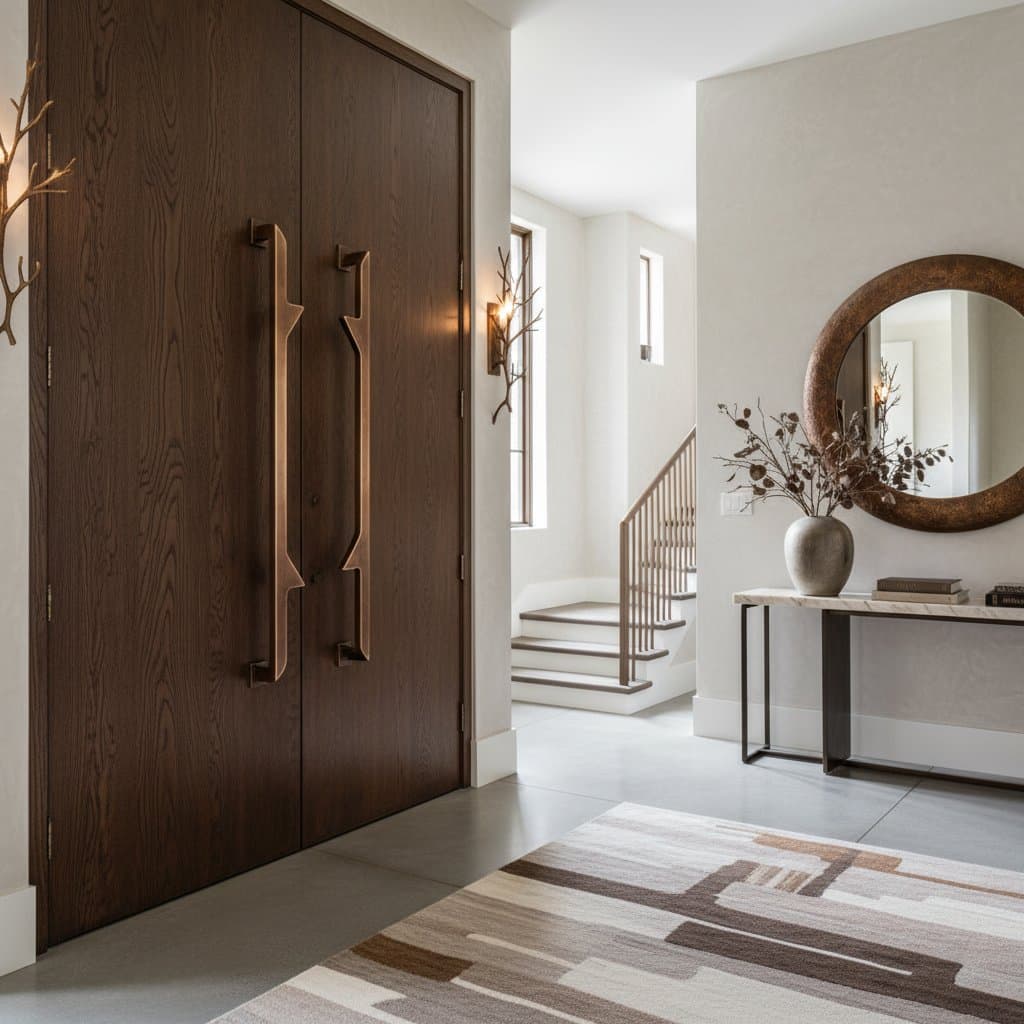Why Barn Door Hardware is Failing in 2025: Common Pitfalls and Smarter Alternatives
Barn doors first enchanted homeowners with their rustic allure and efficient use of space. However, as interior design trends evolve toward sleek, silent, and streamlined environments, the hardware that enables these doors often reveals itself as the primary vulnerability. Issues such as grating rollers and persistent misalignment not only compromise functionality but also undermine aesthetic harmony. By examining these shortcomings, homeowners can sidestep expensive errors and select superior options that endure.
The Initial Appeal and Its Decline
Barn doors rose to prominence by infusing contemporary settings with farmhouse coziness. Exposed tracks, prominent rollers, and weathered wood elements fostered a relaxed, authentic atmosphere. As tastes progressed, however, this overt hardware started to conflict with preferences for hidden mechanisms, fluid movement, and reduced visual noise. Elements that previously conveyed personality now risk appearing obsolete or incomplete, particularly in residences embracing modern or transitional motifs.
Persistent Functional Challenges
The allure of a barn door diminishes rapidly when it produces unsettling noises with every pass. Numerous owners note that their doors move inconsistently, veer from the path, or refuse to latch securely. The exposed nature of the hardware exposes components to accumulation of dust and particles, which degrades operation over time. In contrast to traditional hinged doors, barn doors seldom form a tight seal, resulting in audible transmission and diminished privacy. Such drawbacks prove especially disruptive in private spaces like bedrooms, bathrooms, and home offices.
While soft-close features aim to mitigate these problems, not all hardware kits fulfill their potential. Budget-friendly versions frequently lack the resilience for regular handling, and high-end models may demand ongoing upkeep if parts degrade asymmetrically. Consequently, a seemingly straightforward system necessitates vigilant monitoring and tweaks to maintain reliable function.
Three Practical Strategies for Achieving the Aesthetic Without Compromises
Budget-Friendly Strategy ($400 to $900)
- Select a lightweight hollow-core door paired with a fundamental sliding track assembly.
- Incorporate matte black or brushed nickel fittings to infuse a contemporary edge into the traditional motif.
- Add a compact wall-affixed guide near the floor to minimize swaying.
- Recognize that slight sounds and inconsistencies represent acceptable compromises for affordability.
Mid-Tier Strategy ($1,000 to $2,500)
- Choose solid wood or composite doors equipped with built-in soft-close functionality.
- Employ powder-coated steel components that withstand scratches and corrosion.
- Integrate coordinated handle collections and unobtrusive floor guides for enhanced visual refinement.
- Allocate resources for expert installation to guarantee precise alignment and enhanced glide.
Premium Strategy ($3,000 to $5,000)
- Prioritize elite hardware featuring concealed tracks or embedded rails.
- Utilize engineered wood or metal-encased panels that resist distortion and seasonal shifts.
- Incorporate soft-close and soft-open systems for effortless operation.
- Harmonize the setup with surrounding architectural details to evoke a bespoke craftsmanship.
Essential Guide to Materials and Finishes
- Doors: Opt for white oak, painted medium-density fiberboard, or composite panels finished in satin or subtle sheen.
- Hardware: Favor stainless steel or anodized aluminum available in matte black, champagne bronze, or brushed nickel tones.
- Handles: Select slender pulls or embedded grips to prevent excessive prominence.
- Track Systems: Consider concealed or overhead-mounted setups that obscure operational elements.
The True Demands of Maintenance
Barn door hardware demands more consistent care than many anticipate. Tracks require frequent clearing of debris, rollers benefit from periodic lubrication, and soft-close dampers may slacken with use. In moisture-rich environments, metal rails can accumulate superficial rust that impedes smooth travel. Wooden surfaces might swell or shrink, prompting realignment. Routine tasks such as securing bolts and brackets integrate into standard household upkeep. Individuals desiring minimal intervention often find pivot or pocket doors offer superior longevity.
Key Errors to Sidestep
- Neglecting Space Clearances: Barn doors demand wall clearance matching their full width, which constrains furniture arrangements.
- Applying Outdoor Hardware Indoors: Bulky tracks can dominate compact areas; scale components appropriately to the room size.
- Bypassing Soft-Close Validation: Systems may advertise silence yet falter in everyday scenarios; verify performance prior to commitment.
- Disregarding Privacy Essentials: Barn doors achieve incomplete closure, rendering them unsuitable for bathrooms or acoustically sensitive zones.
Integrating Solutions for Lasting Satisfaction
Barn doors retain relevance in contemporary design, yet their signature exposed hardware falls short of current standards for hushed efficiency and polished presentation. Those desiring sliding functionality can turn to veiled tracks, streamlined bypass configurations, or fused approaches that merge wooden warmth with precise modern engineering. Through deliberate choices in products and diligent maintenance practices, homeowners secure a sliding door solution that endures aesthetically and performs without interruption.






